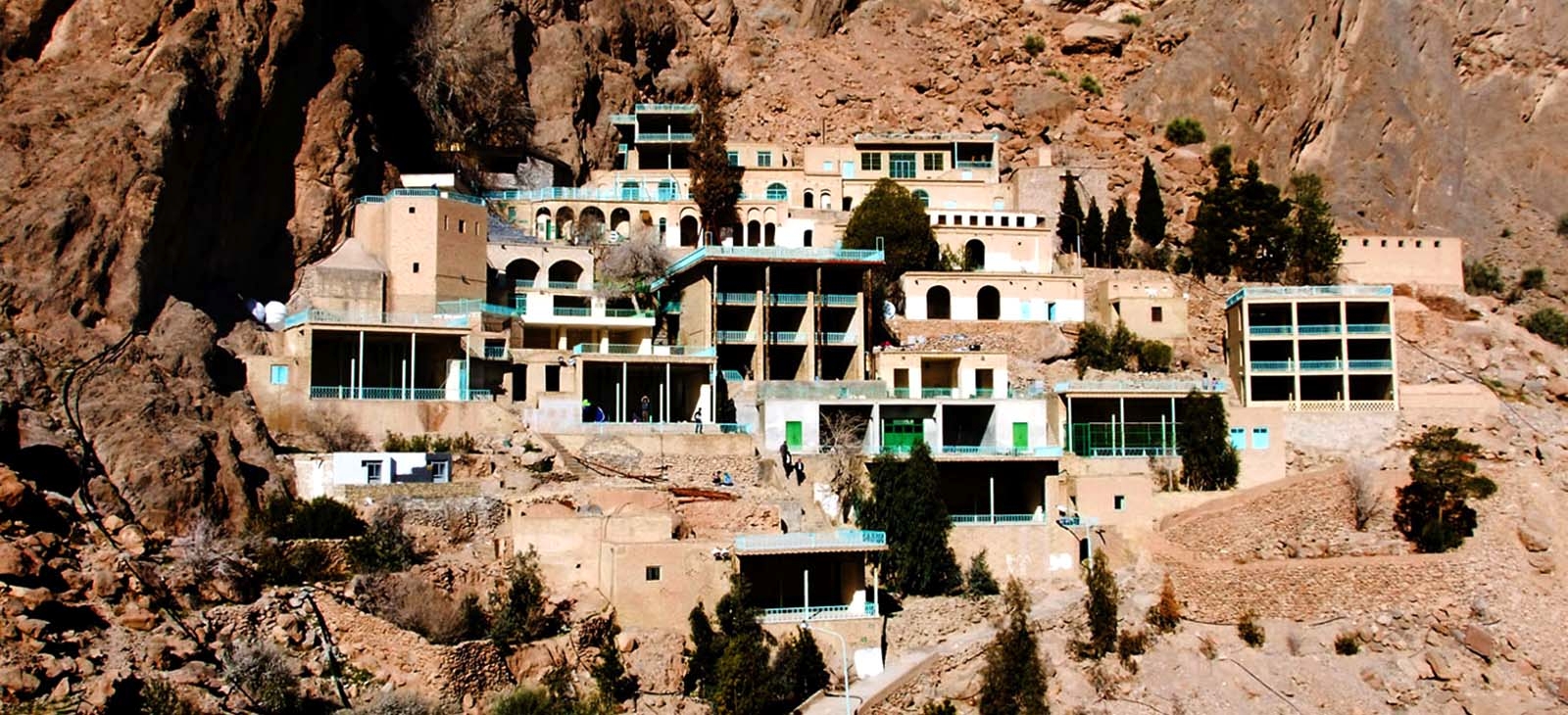Chak Chak, also known as Pir-e Sabz "The Green Pir".
Chak Chak, also known as Chek Chek, Chāhak-e Ardakān, Pir-e Sabz, "The Green Pir" is a village in Rabatat Rural District, Kharanaq District, Ardakan County, Yazd Province, Iran. In every corner of Iran, wherever there is a trace of life, there is a place of worship to express one’s devo- tion or thanks toward God. One of the ancient places is the famous Zoroastrian pilgrimage center called Chak Chak, also known as Pir-e Sabz-e Chak Chak, which dates back to pre-Islamic pe- riod, Ezinearticles.com reported. Located in Yazd province, Chak Chak is re-vered for its spiritual values by the followers of the ancient Iranian religion.
When we visit the site, it gives us the impres-sion of being able to touch the sky and for some precious moments visitors put themselves in the shoes of people who, hundreds of years ago, vis-ited the site at least once a year as part of an annual pilgrimage.
The fact that caves and cracks in the rocky slopes of mountains had long been a refuge for spiritual people to sit in absolute isolation and meditation should come as no surprise.
Landscape The entrance of the temple is reached through a two-planked doorway over which stands an em-bossed image of two Achaemenian soldiers.
When we walk through the doors, we come across a cozy and private cave paved with con-crete Malachite (green marble) and a chandelier slanting from the ceiling. The temple has an altar with three oil-burning lights and a container of oil beside them.
In front of the altar is a set of trays combined in such a way as to look like a lotus flower from above and serves as a place to receive donations from pilgrims. Donations could also include fruits such as oranges to be placed on this large tray as offering.
There are also window-like open spaces or holes with-in the cave over which huge branches of the nearby tree extends inside the main praying area and a small water-fall that keeps the Malachite stage of the altar wet, upon which no one is allowed to step. Beside the holy spring is an immense and ancient tree.
Chak Chak is a manmade grotto sheltered by two large bronze doors. The shrine enclosure is floored with marble and its walls are darkened by fires kept eternally burning in the sanctuary.
In the cliffs below the shrine are several roofed pavil-ions constructed to accommodate pilgrims.
The word Chak Chak stands for “falling in drops” or “drop by drop”. The name refers to the water leaking Zoroastrians view this as a sacred incident where Ana-hita, the angel of water, fertility and prosperity, is venerated.
The construction of the site is linked to Nik Banou, the daughter of the last Sassanid king Yazdgerd III--whose other daughter, Bibi Shahr-Banou became the wife of Imam Hussein (AS), the Shiites’ third imam--who was famous for her
piety.
Legend has it that Nik Banou took refuge in this temple when she was chased by a group of medieval Arab soldiers until she arrived at this location. She kneeled down and prayed to God to help her safeguard her dignity. As she uttered these prayers, the walls of the cave cracked open and let her in as a pious guardian of the temple.
Since then, nobody saw her as she vanished forever.
Zoroastrians believe the ever-dripping water is the tear of grief that the mountain sheds in re- membrance of Nik Banou.
The temple of Chak Chak is so sacred to Zoro-astrians that every year in the month Khordad (the third solar month of the Iranian calendar), flocks of pilgrims from all around the world come to this place to hold the ancient ceremony of Khordad Salan.

